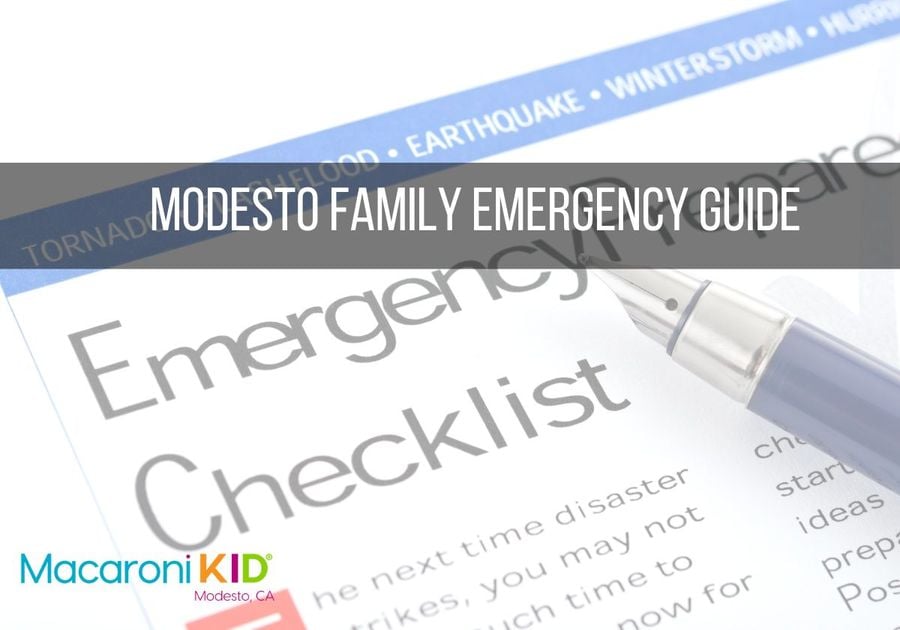Disaster Preparedness Guide: Kids and Families
1. Involve Kids in Emergency Planning
- Explain the Plan: Use simple, age-appropriate language to explain what emergencies are and how the family will stay safe.
- Practice Drills: Regularly practice evacuation routes and "shelter-in-place" drills to help kids feel confident and prepared.
- Teach Emergency Contacts: Ensure your children know key phone numbers (parents, relatives) and how to use emergency services (911).
- Create a Family Meeting Spot: Decide on a safe location outside the home and a secondary spot outside the neighborhood in case you get separated.
2. Create a Kid-Friendly Emergency Kit
Each child should have their own mini emergency kit with the following items:
- Comfort Items: A favorite stuffed animal, blanket, or toy for emotional security.
- Personal ID Card: Include the child’s name, address, allergies, and emergency contact information.
- Snacks and Water: Small bottles of water and non-perishable snacks like granola bars.
- Activity Kit: Books, coloring supplies, or small games to keep them occupied and distracted during stressful moments.
- First Aid Supplies: Band-aids, child-safe medications, and any specific medical needs (e.g., inhalers, EpiPens).
3. Emergency Communication Plan
- Assign a Role: Give each child a specific responsibility that is age-appropriate, such as carrying a flashlight or staying close to a sibling.
- Keep Communication Simple: Children should understand the importance of staying calm and following instructions.
- Designate a Contact: Have a trusted friend or relative that your child can reach if they are separated from you.
4. Prepare for Specific Needs
- Medical Requirements: Ensure extra supplies of medications or medical equipment are readily available.
- Children with Special Needs: If your child has special needs (e.g., autism, sensory sensitivities), pack noise-canceling headphones, familiar toys, or visual aids to help them feel grounded.
- Pets: Don't forget to include your family pet in the plan, as pets often provide comfort during stressful situations.
5. Coping Strategies for Children
- Reassurance: After explaining the potential for emergencies, always remind children that you're preparing to keep them safe.
- Emotional Expression: Encourage kids to express their feelings about emergencies through drawing or talking. Normalize any fears they have.
- Model Calm Behavior: Kids take cues from adults, so staying calm helps them do the same.
6. Know the School's Emergency Plan
- Stay Informed: Understand the disaster plan for your child’s school or daycare. Ensure they know how to reunite you with your child in an emergency.
- Emergency Cards: Make sure the school has updated emergency contact information, including any special needs or allergies.
7. Plan for Different Types of Disasters
- Earthquake: Teach children to "Drop, Cover, and Hold On." Practice in different locations of the house.
- Fire: Practice a fire escape plan that includes testing smoke alarms and using safe exits.
- Flood: Talk about moving to higher ground and how to avoid floodwaters.
- Tornado: Identify safe areas in your home where the family should gather.
8. Stay Connected
- Emergency Alerts: Sign up for local emergency alerts on your phone.
- Emergency Radio: Have a battery-powered or hand-crank radio to stay informed if cell service is down.
9. After the Disaster
- Re-establish Routine: As soon as it’s safe, get back to regular routines to give children a sense of normalcy.
- Debrief: Talk to your kids about the experience, letting them ask questions and share their thoughts.
Preparedness can be empowering for kids, and with a well-thought-out plan, they can handle emergency situations more calmly and safely.
Stay Informed
Sign up for alerts and updates:
- Stanislaus County Office of Emergency Services: https://www.stanoes.com
- Alert Stanislaus: Get real-time emergency alerts by signing up at https://www.stanoes.com/stanemergency/register-for-alerts
- Kid Zone by Stanislaus County Office of Emergency Services: A fun and educational resource for kids to learn about emergency preparedness. https://www.stanoes.com/stanemergency/kid-s-zone
Follow these social media accounts for updates:



